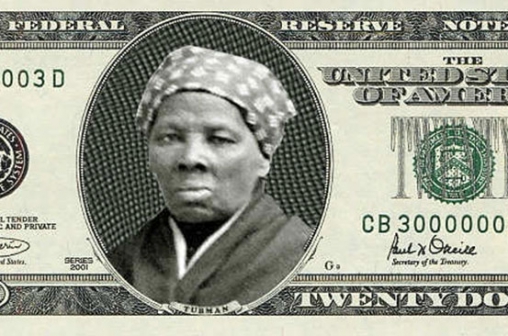
WASHINGTON: Anti-slavery crusader Harriet Tubman will become the first African-American on the face of U.S. paper currency, and the first woman in more than a century, when she replaces former President Andrew Jackson on the $20 bill.
The U.S. Treasury Department said on Wednesday that Tubman, who was born into slavery in the early 1820s and went on to help hundreds of slaves escape, would take the center spot on the bill, while Jackson, a slave owner, would move to the back.
Introduced alongside a slew of changes to the $5 and $10 notes as well, the redesign gives the Treasury "a chance to open the aperture to reflect more of America's history," Treasury Secretary Jack Lew said.
A new $10 bill will add images of five female leaders of the women's suffrage movement, including Sojourner Truth and Elizabeth Cady Stanton, to the back, while keeping founding father Alexander Hamilton on the front.
The reverse of a new $5 note will show former first lady Eleanor Roosevelt and civil rights leader Martin Luther King Jr., officials said. Former President Abraham Lincoln will remain on the front.
Lew said the designs should be unveiled by 2020 and go into circulation "as quickly as possible," although he declined to say when. He said the $10 bill was scheduled to go out first, citing security needs.
The long-awaited decision to replace the seventh president of the United States with Tubman followed months of outreach by the Treasury regarding which woman should be featured on a bill.
The debate began when the Treasury announced plans in June to feature a woman on the $10 note, prompted partly by a young girl's letter to President Barack Obama that criticized the lack of women on U.S. currency and a social media campaign last year called "Women on 20s."
A MUSICAL
Hamilton's growing celebrity status, due largely to a Pulitzer Prize-winning Broadway musical about his life, "Hamilton," created by Lin-Manuel Miranda, propelled an effort to keep the first U.S. Treasury secretary on the $10 note and to replace Jackson on the $20 bill instead.
Jackson, a hero of the War of 1812's Battle of New Orleans, was president from 1829-1837. But he has been criticized for his treatment of American Indians and ownership of slaves.
After considering hundreds of candidates, Lew said Tubman was chosen for her leadership and work helping others.
"It's the essential story of American democracy about how one person who grew up in slavery, never had the benefit of learning how to read or write, could change the course of history," he said.
Tubman grew up working on a Maryland plantation and escaped in her late 20s. She returned to the South to help hundreds of black slaves to freedom and worked as a Union spy during the Civil War. She died in 1913.
Stay informed. Subscribe to our newsletter
Women have not been depicted on U.S. bills since Martha Washington, who was on the $1 silver certificate from 1891 to 1896, and Pocahontas, who was in a group picture on the $20 bill from 1865 to 1869.
On coins, Sacagawea, a Native American who assisted the Lewis and Clark Expedition, is featured on the gold dollar, and suffragist Susan B. Anthony is on the silver dollar. Deaf-blind author and activist Helen Keller is on the back of the Alabama quarter.
Tubman became the top-trending hashtag on Twitter shortly after the news broke on Wednesday, with more than 100,000 tweets and mentions online.
Democratic presidential candidate Hillary Clinton, who is campaigning to become the first female U.S. president, praised Tubman as "a woman, a leader, and a freedom fighter" on Twitter and said she could not think of a better choice.
Some Twitter users applauded Treasury's decision to keep Hamilton on the $10 bill.
Actress Mara Wilson (@MaraWritesStuff) tweeted at Miranda, the "Hamilton" creator, saying: "@Lin_Manuel First you win a Pulitzer, now you're affecting US currency. Get some rest!"
 The Standard Group Plc is a
multi-media organization with investments in media platforms spanning newspaper
print operations, television, radio broadcasting, digital and online services. The
Standard Group is recognized as a leading multi-media house in Kenya with a key
influence in matters of national and international interest.
The Standard Group Plc is a
multi-media organization with investments in media platforms spanning newspaper
print operations, television, radio broadcasting, digital and online services. The
Standard Group is recognized as a leading multi-media house in Kenya with a key
influence in matters of national and international interest.
 The Standard Group Plc is a
multi-media organization with investments in media platforms spanning newspaper
print operations, television, radio broadcasting, digital and online services. The
Standard Group is recognized as a leading multi-media house in Kenya with a key
influence in matters of national and international interest.
The Standard Group Plc is a
multi-media organization with investments in media platforms spanning newspaper
print operations, television, radio broadcasting, digital and online services. The
Standard Group is recognized as a leading multi-media house in Kenya with a key
influence in matters of national and international interest.









